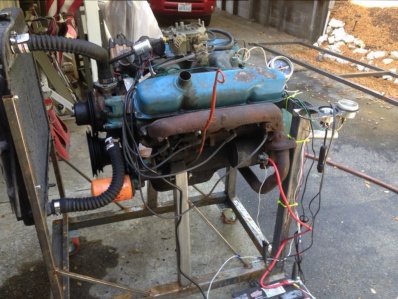EngineerDoug
Well-Known Member
Hello all,
I have a stock 2BBL 383 that came with a project car. It has been sitting around for about 4 months since I bought it, and I don't know how long previous to that. I would like to get an idea of the health of this engine, as I might want to use it as a runner until I build a fresh 440 for the car.
I compression tested it and the readings are 120-135 psi. The engine turns over evenly, and will build about 40 psi oil pressure with no plugs installed. Note this is a 9.2:1 motor, per the '68 specs. My first question is, how do these readings sound to you? Also, I am wondering if I should use something to lube the cylinders before starting it. Any ideas? Of should I just go ahead and start it?
Thanks!
I have a stock 2BBL 383 that came with a project car. It has been sitting around for about 4 months since I bought it, and I don't know how long previous to that. I would like to get an idea of the health of this engine, as I might want to use it as a runner until I build a fresh 440 for the car.
I compression tested it and the readings are 120-135 psi. The engine turns over evenly, and will build about 40 psi oil pressure with no plugs installed. Note this is a 9.2:1 motor, per the '68 specs. My first question is, how do these readings sound to you? Also, I am wondering if I should use something to lube the cylinders before starting it. Any ideas? Of should I just go ahead and start it?
Thanks!

















